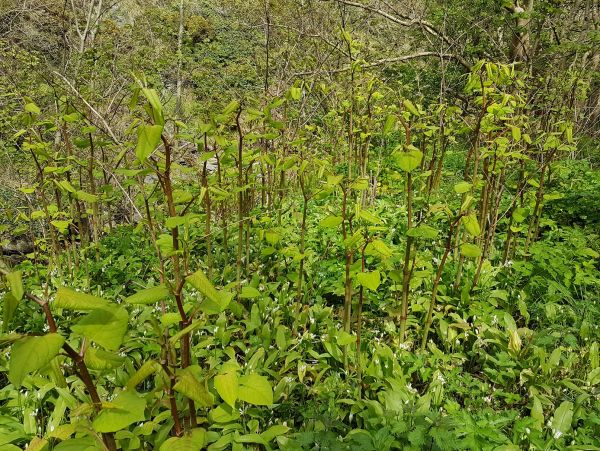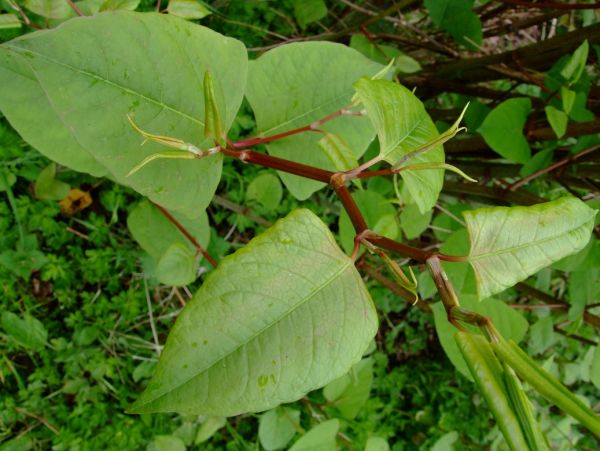The Department of Environment, Food and Agriculture’s Ecosystem Policy Team has updated its Japanese knotweed factsheet, to provide the public with more information about the identification and control of this non-native invasive plant species.
The Isle of Man is home to a multitude of beautiful native flowers, ferns, trees and shrubs, and some that have been introduced from across the globe which have not all been contained to gardens.
While many are considered quite harmless, though their introduction into semi-natural habitats is not encouraged, others however, are ‘invasive’, which means they are a plant pest that rapidly grow and spread out of control, invading natural ecosystems, outcompeting and debilitating native plants and in some cases damaging built structures.
In the Isle of Man, invasive plant species are listed on Schedule 8 Part II of the Wildlife Act 1990.
The Wildlife Act 1990 makes it an offence to plant or otherwise cause to grow in the wild any of the plants listed on Schedule 8. (This is different from the plant species and responsibilities listed under the Weeds Act 1957).
Examples of these plants include Himalayan balsam Impatiens glandulifera, montbretia Crocosmia × crocosmiiflora and giant hogweed Heracleum mantegazzianum.
But the most invasive plant on the Island, which was introduced to the British Isles in the 1800s as an ornamental plant, is Japanese knotweed Fallopia japonica – one that has become a big problem and which has seriously outgrown its welcome.
When grown, Japanese knotweed has bamboo-like green stems, which can grow up to three metres in height, and big, distinctive, heart-shaped green leaves. Though it dies back in winter, its woody brown stems remain and starting in April, new red shoots appear, followed by the leaves.

Japanese knotweed is capable of growing in all terrestrial habitats, but is most often found along riverbanks, hedge banks and waste ground.
As well as outcompeting native plants, damaging natural habitats, particularly river banks where it can contribute to increased erosion, knotweed can cause significant structural damage to buildings – exploiting, widening and growing through cracks in concrete, brickwork and tarmac.
Why is Japanese knotweed so invasive?
It spreads so easily – knotweed spreads through its tough roots (also known as rhizomes) which can grow three metres deep and seven metres out from the parent plan. It can also be spread through tiny fragments of its rhizomes or stem (1cm in size) or from crown cuttings, which can regrow into a new plant and be transported through topsoil, rivers, stem cutting (such as via inappropriate verge-strimming) and through garden waste.

Knotweed readily re-establishes along riverbanks from downriver re-contamination. It is very hard to eradicate when established – successful control usually requires the application of chemicals, or hand pulling and digging over several years.
It is the responsibility of the landowner or tenants of the land affected to treat and control Japanese knotweed.
What are the dos and don’ts?
Please do:
Check for knotweed on your land;
Responsibly treat knotweed if you find it growing on your land;
Report knotweed to the landowners or the Ecosystem Policy Team if the landowners are unknown.
Read through the DEFA Japanese knotweed leaflet for more information.
Please don’t:
Strim or mow knotweed - As described above, knotweed is easily spread through fragments and strimming may enable this;
Move topsoil or green waste contaminated with knotweed material to different sites, this includes not bringing it to amenity sites, as this may enable its spread;
Compost any parts of a Japanese knotweed plant.
What is DEFA doing?
Responsibly controlling and eradicating it where it is found growing on its land. However, re-contamination from off-site is an issue so if you do find it on DEFA land please let them know.
Providing free advice to landowners, occupiers, contractors etc. about how to responsibly manage and eradicate knotweed.
Japanese knotweed is not an easily tackled issue. It needs everyone’s help. So let’s all do our bit to preserve and protect our beautiful Biosphere.
For more information and advice on identification and control, please contact the Ecosystem Policy Team on ecopolicy@gov.im or on 01624 651577.
For more information on invasive species, click here.


